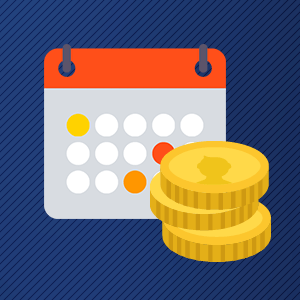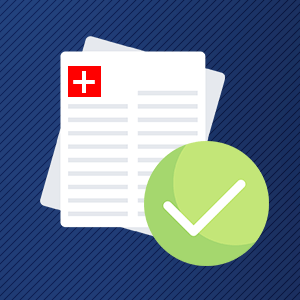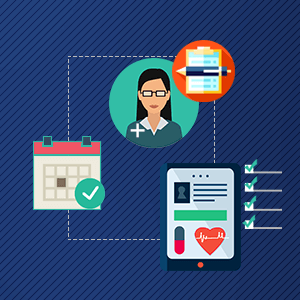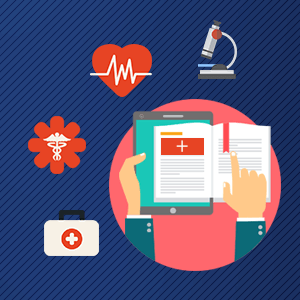Top healthcare challenges solved by mobile apps: Part 1 – For providers
It has always been important to physicians and patients alike to be able to deliver and receive timely, cost-effective, and focused care. Increasing demands on healthcare providers have created a real need for efficient and effective care responsiveness.
Mobile apps are reshaping the healthcare industry. In 2016, it is estimated that more than 32 percent of US consumers (PwC’s Health Research Institute) have at least one health-related app on their smartphone or tablet.
An AMA survey indicates that 85 percent of physicians agree that digital tools including apps improve patient care. Most of the healthcare challenges are being solved by mobile apps.
Mobile technology simplifying provider care
According to the Wall Street Journal, in 2011, 72% of all US physician’s own smartphones, and 95% of them download med apps.
The distinct advantage of mobile devices is their portability. Mobile managed healthcare provides physicians with the ability to video chat with their patients. Mobile apps provide healthcare providers with an immediate searchable library of medical resource material.
Rapid access to reliable information is critical. This is important regardless whether it involves a patient entering the ER, scans for maladies, routine physical wellness, or on-call medical advice and prescription. Technology has helped reduce medical errors, increased diagnoses, and improved medical efficiency.
Challenges remain, but providers are benefitting from the increased technology implementation and evolution of mobile apps to effectively communicate patient issues and remedies.
Here are the top 5 benefits of mobile apps that have helped in eliminating the challenges in healthcare, making provider care less complex:
1. Improved treatment time & costs

Cloud-based apps and file sharing makes data collection, entry, retrieval, and sharing among medical professionals and facilities more efficient and the patient’s treatment and care generally safer.
Mobile devices and apps make electronic medical records (EMR) and electronic health records (EHR) readily available and easier to update and share among healthcare providers.
Knowledge of ailments and informed treatment can now be dispensed in a more-timely manner.
Mobile medical calculator apps use standard formulas to determine risk scores, body mass index (BMI), body surface area (BSA), and suggest proper drug doses.
Medications are now more accurately prescribed. The prescription can also be sent to, filled, and be waiting for the patient at a location nearest to them.
Clinical mobile apps help identify the appropriate scans or tests required for a patient to undergo. Their accuracy minimizes the chance of miscalculations and multiple screenings and hence minimizes the chances of erroneous additional cost of the treatment.
Doctors and staff can now streamline overall healthcare record maintenance while complying with HIPAA.
Paperwork and billing can be comparatively reduced. It is made sure the reports are current and updated from time to time.
Access to patient data is now available 24/7. Patient vitals monitoring and tracking is also possible with mobile apps.
2. Easily accessible latest medical information

There are volumes of information and resources in the field of healthcare. Medical advancements, procedures, drugs/dosage, and technology are rapidly changing and updating.
It is becoming increasingly difficult to know what to access that will provide the right information at the right time.
This issue has partly been resolved by mobile apps. The latest medical news, publications, research, studies, white-papers, journals and other information is available and readily accessible to physicians on their smartphones and tablets.
3. Effective hospital management

In-house apps have helped in improving hospital management effectiveness.
Hospital and pharmacy management apps can help reduce hospital costs and medical errors. They enable regulatory compliance with established protocols and monitoring, and help enhance overall workflow of processes. They can also track hospital medications in real time, which aids inventory control.
Mobile solutions that can help track metrics essential to the hospital care have been developed to assist hospital ceo’s manage their in-house dashboards.
By incorporating GPS navigation in hospital apps, the management can monitor the staff availability and this in turn also aids the patients to find their doctors, respective operation theatres and navigate to other places inside a hospital. Hospital admins can also keep a track of available beds, rooms, medical equipment through medical stock inventory applications.
4. Efficient patient engagement & monitoring

Mobile devices have helped boost patient engagement levels to several folds due to simplified means of communication.
Many surveyed medical students and healthcare providers confirm that mobile devices improve communication between doctors and nurses on inpatient wards. They also indicate that text messaging is more effective than the telephone. And it provides a rapid response to emails.
Mobile app portals that provide chat, social networking, video/facetime and messaging aid real time communication between patients and their healthcare providers. Emergency situations can now be handled quickly and more effectively.
Mobile technology has been supporting patient monitoring today. For instance, Dementia, Alzheimer’s and other high-risk patients can track their health behaviors over extended periods of time.
According to the AMA, physicians appreciate and use these tools to reduce doctor-burnout, improve efficiency, enhance patient safety, and contribute to improved physician-patient relationships. The survey also indicated that primary care providers in large complex practices have the highest record of digital usage.
Additionally, there are clinical-specific apps designed to simplify communications between clinicians. Telemedicine chat apps are available from health IT providers. Social networking apps enable discussion, consultations, and collaboration among healthcare providers.
5. Enhanced medical education & training

Medical training has evolved to meet increasing demands in practice, decision making, and responsibility.
Mobile apps are not intended to replace instruction, but rather to complement discussions with medical teams.
The iDoc app is one mobile app that provides timely, internet-free access to key medical training documents and textbooks.
Touch Surgery and vCath mobile apps are used for simulated surgery training for medical students.
Summary
Mobility has been driving healthcare technology till now and is continuing to produce far sighted benefits to us. Data is now readily available to both patients as well as providers through increased development of EMR and EHR platforms.
These are the healthcare challenges solved by apps for providers.
Stay tuned, as the next part in this series we will be discussing the overall positive impact of healthcare mobile apps on the patient journey.


